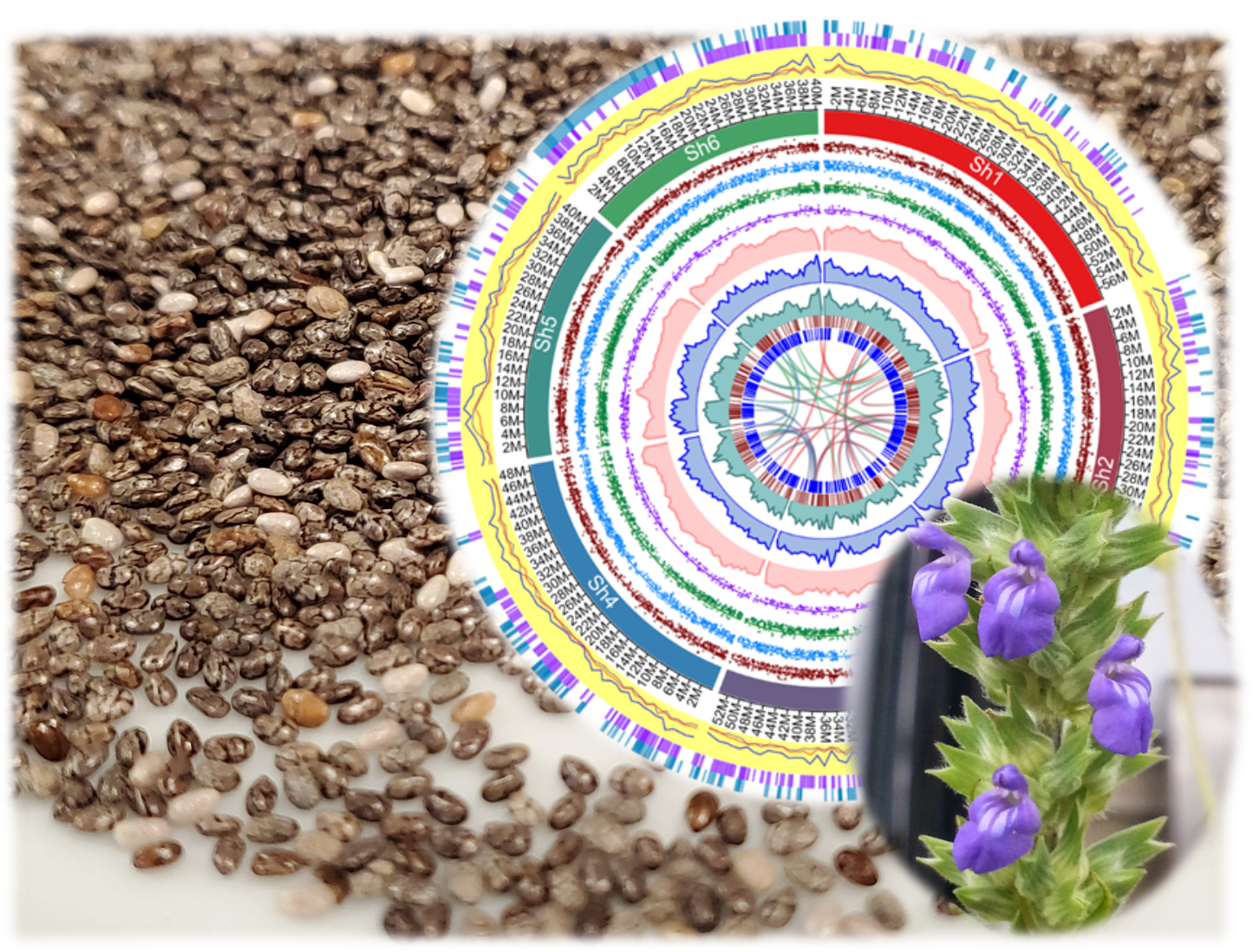- justin's Blog
- Log in to post comments
Title: Unlocking the genome and secrets of Chia seed: The Nutritional Powerhouse
Image:

Image showing chia seeds, an assembled genome, and the flowers. (Source: Jaiswal Lab)
Chia, a tiny seed from Southern Mexico and Central America, might just be the next big thing in healthy eating!
Packed with loads of good stuff like proteins, healthy fats, fiber, and essential minerals, chia seeds offer a bunch of health benefits as a superfood. They can help your heart, manage blood sugar, good for gut health, and might even have some anti-cancer properties. Plus, they can turn into a gel-like substance, which makes them super versatile in cooking and other cool uses.
What’s exciting is that researchers and students in Prof. Pankaj Jaiswal and Dr. Sushma Naithani’s laboratory in the Department of Botany and Plant Pathology at Oregon State University have been digging deep into chia's secrets. They've figured out the blueprint of its genes, kinda like a map for understanding how it grows and its nutritional superpowers.
The unveiling of the chromosome-level chia reference genome assembly, spanning 303.6 Mb with 48,090 annotated protein-coding genes, marks a watershed moment in agricultural genomics. Supported by extensive evidence from multiple sources including transcriptomic data, homology, and protein domain presence, this comprehensive assembly illuminates the genetic architecture of chia. Additionally, the assembly showcases the genomic organization of organelles—plastids and mitochondria—underscoring their relevance in chia's biological processes.
Notably, their study identified genes encoding lectins and terpene synthases, showcasing potential roles in plant immunity and secondary metabolite production.
Furthermore, they unraveled pathways involved in the biosynthesis of essential fatty acids, polyunsaturated fatty acids (PUFAs), and seed mucilage. Understanding these pathways aids in harnessing chia's nutritional and industrial potential.
In the pursuit of unlocking chia's potential in health-promoting attributes, the investigators for the first time computationally analyzed a plant genome for bioactive peptides derived from chia proteins.
This comprehensive analysis offers a significant step forward in understanding chia's genomic blueprint, nutritional potential, and applications, paving the way for future crop improvements and utilization in diverse industries.
Project data is released from publicly accessible Salvia Genome Database (SalviaGDB) from the website https://salviagdb.org.
The authors include researchers Pankaj Jaiswal, Sushma Naithani, Parul Gupta, Justin Elser, Justin Preece, graduate students Mathew Geniza, Noor Al-Bader and Rachel Baschieri, and undergraduate students Jeremy Phillips and Ebaad Haq.
Reference: Gupta P, Geniza M, Elser J, Al-Bader N, Baschieri R, Phillips JL, Haq E, Preece J, Naithani S and Jaiswal P (2023) Reference genome of the nutrition-rich orphan crop chia (Salvia hispanica) and its implications for future breeding. Front. Plant Sci. 14:1272966. doi: 10.3389/fpls.2023.1272966
OSU Press release: https://www.eurekalert.org/news-releases/1010833
